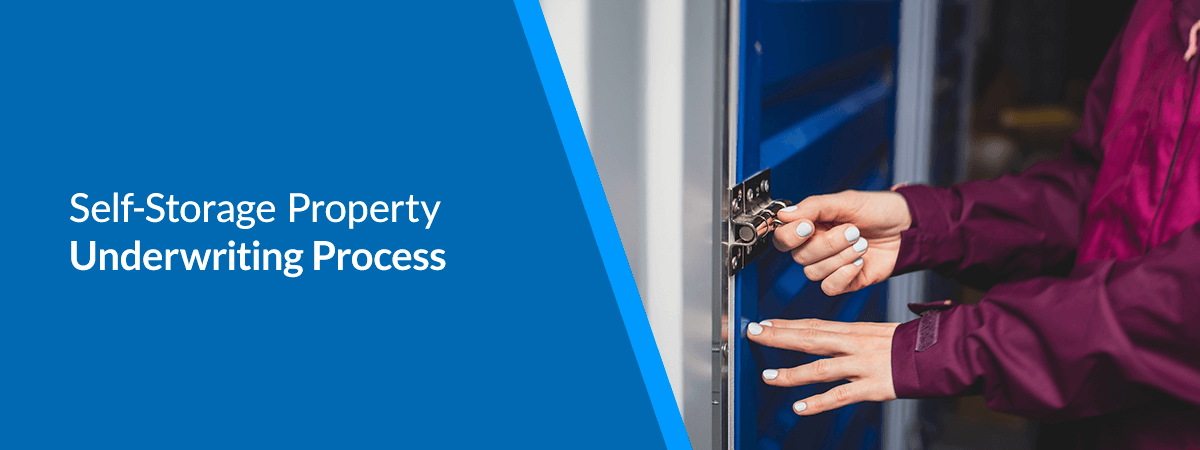Self-Storage Property Underwriting Process

The underwriting process is a vital part of a self-storage facility sale, determining the property’s potential profitability and value. With numerous steps and players involved in underwriting, there’s a lot to wrap your head around. Read on for a comprehensive explanation of how to underwrite self-storage properties.
What Is Self-Storage Underwriting?
Underwriting involves assessing the financial risk associated with the purchase, construction, refinancing or expansion of a property. It’s an integral part of any real estate event, as it determines the financial feasibility of the transaction for everyone involved.
Who’s Involved in the Self-Storage Underwriting Process?
Self-storage underwriting involves three main decision-making parties:
- Operator: The operator’s goal is to build enough value in the self-storage facility to make money. They analyze market data and facility operating history to estimate the facility’s potential profitability, then set a sale price that allows them to build value, repay the loan and give investors a competitive return.
- Lender: The lender’s primary concern is whether the borrower can repay their loan. The yield — the profit from lending the money — must compensate for the financial risk. They use metrics like the debt-service coverage ratio (DSCR) to calculate the appropriate loan amount.
- Investors: Investors want to know how much money they’re getting and how they’ll receive it. To measure an investment’s performance, these decision-makers often use the equity multiple — the total amount received from an investment divided by the total equity invested.
The Self-Storage Underwriting Process Explained
Check out this six-step guide to the self-storage underwriting process:
- Confirm unit rents: Investors start by collecting information about the storage units, the property and nearby rentals to project facility operating results and determine how much they should charge for rent.
- Confirm operating expenses: After projecting rents, investors must calculate their future operating expenses. While operating expenses vary, common costs for self-storage properties include security system fees, utilities, insurance and maintenance fees. Investors subtract operating expenses from the rental revenue to determine the facility’s stabilized net operating income (NOI).
- Determine property value: Investors then divide the NOI by the cap rate — the property’s potential return — to determine property value after making facility improvements. This amount is known as the after-rehab value (ARV).
- Determine loan amount: The lender will issue a loan based on the property’s appraised value. The loan amount sets the upper limit for the facility’s acquisition and rehab budgets.
- Confirm budgets and financing: Investors work with a team of specialists to confirm their facility rehab budget and determine the best financing options.
- Determine the deal’s exit criteria: Investors must decide whether the deal meets their investment criteria by examining their investment against projected cash inflows. Depending on how the numbers look, the investor will either accept, negotiate or walk away from the deal.
Invest in Self-Storage Today
Investment Real Estate, LLC is a top self-storage real-estate agency serving the Northeastern and mid-Atlantic states. Explore our self-storage listings or get in touch with a broker today!


